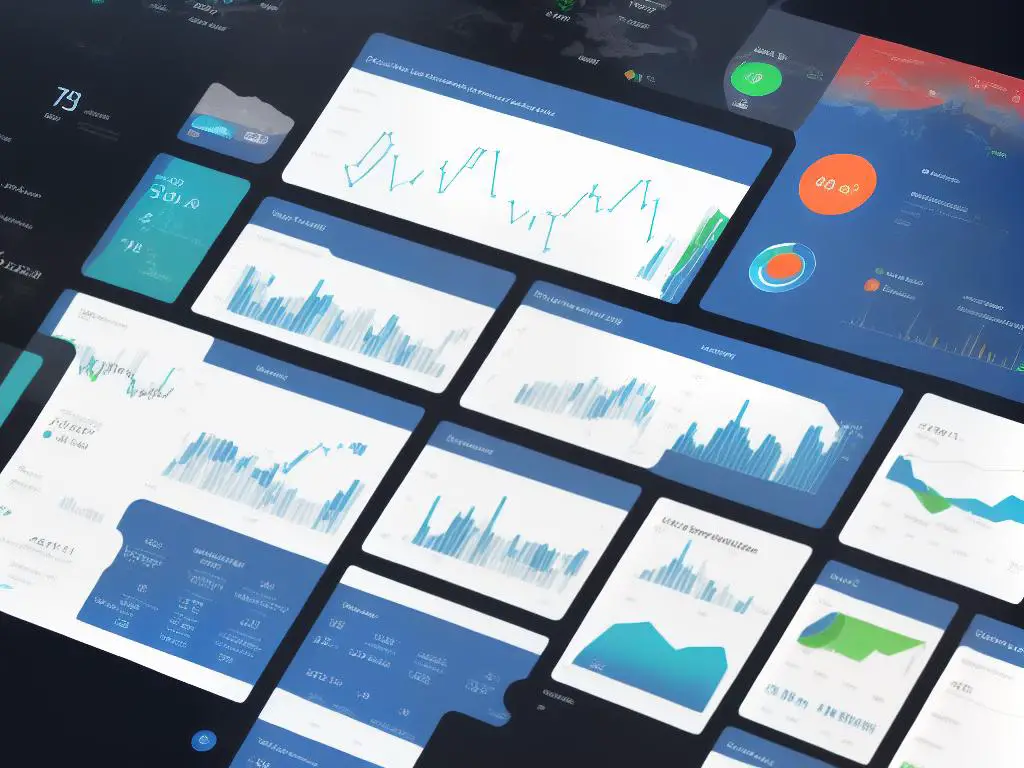In the fast-paced digital world, having an online presence is only part of the puzzle to achieve success. Ensuring your content ranks well within search engine results is vital for increased visibility and engagement. This essay will discuss various factors affecting content ranking, such as keyword research and optimization, high-quality content creation, mobile responsiveness, page speed, backlinks and link building strategies, as well as on-page and off-page SEO techniques. By implementing these methods, content creators and businesses can significantly improve their rankings and, in turn, drive growth and success.
Keyword Research and Optimization
Introduction to Keyword Research and Optimization
Keyword Research and Optimization play an essential role in improving content ranking as they help search engines understand the core subject matter of your content. In today’s highly competitive digital landscape, it’s crucial to establish relevancy and visibility for your content to capture user attention and satisfy search engine algorithms.
The Importance of Keyword Research
Keyword research is the process of identifying specific search terms and phrases that users are likely to input while looking for information or products online. These keywords help search engines understand the topic you are targeting and display your content to the right audience. Conducting thorough keyword research guides your content creation process and ensures that your content is better aligned with user search intent.
Identifying relevant and effective keywords helps your content rank higher in search engine results, which increases visibility, drives organic traffic, and ultimately leads to higher conversion rates. Furthermore, keyword research enables you to analyze competitors’ strategies and discover new opportunities for content development, targeting gaps in the existing market.
Selecting Relevant and Effective Keywords
To select relevant and effective keywords for your content, begin by compiling a list of potential search terms related to your topic. Utilize various tools and resources, such as Google Keyword Planner, SEMrush, or Moz, to gather data on search volume, competition levels, and trends.
When analyzing this data, focus on four main criteria:
- Relevance: Ensure your keywords are directly related to your content and accurately reflect the specific message you intend to convey.
- Search Volume: Target keywords with a relatively high search volume to increase your chances of ranking and attracting a sizable audience.
- Competition: Strive for a balance between low competition (easier to rank) and high competition (potentially higher rewards) keywords.
- Search Intent: Understand the purpose behind user searches and align your content accordingly, whether the goal is informational, commercial, or navigational.
Optimizing Keyword Placement within Content
Effective keyword placement is crucial as it directly influences your content ranking. Keep these guidelines in mind when incorporating keywords into your content:
- Title Tags: Include your primary keyword in the title tag, which serves as the headline for your content in search engine results. This placement signals the primary focus of your content and increases its chances of ranking.
- Meta Descriptions: Although not a direct ranking factor, incorporating keywords into your meta description can influence click-through rates. This 160-character snippet provides a brief summary of your content and should entice users to visit your site.
- Headers (H1, H2, H3): Use header tags to break up your content into digestible sections and incorporate keywords to emphasize the importance of various subtopics.
- Content Body: Distribute your keywords naturally throughout the body of your content, avoiding forced insertions. This improves readability and aligns with search engine algorithms that identify keyword stuffing.
- URL: Incorporate your primary keyword in the URL to clearly indicate the topic of the webpage and to improve its ranking potential.
- Alt Tags: Keywords used in image alt tags provide additional context to the search engines, enhancing the overall understanding of your content.
Monitoring Keyword Density
Keyword density refers to the number of times a keyword appears in your content compared to the total word count. High keyword density can be a red flag for search engines, suggesting that content is low-quality or attempting to manipulate rankings. To avoid over-optimization, aim for a keyword density of 1-2% in your content, ensuring that keyword usage appears natural and does not compromise readability or quality.
Conclusion
Effective keyword research and optimization are fundamental components of a successful content strategy, as they help you create relevant, high-quality content that ranks well in search engine results. Driving traffic to your website ultimately delivers higher conversions. By paying close attention to the selection, placement, and density of your keywords, you can achieve better visibility and establish a strong presence in your target market.

High-Quality Content Creation
The Importance of High-Quality Content Creation
Furthermore, in the world of digital marketing and search engine optimization (SEO), high-quality content is no longer just a nice-to-have but an essential component of a successful strategy. This shift is driven by major search engines like Google, which have been continuously updating their algorithms to prioritize well-researched, valuable, and engaging content. As a result, content creators must adapt their approach to content creation in order to improve their rankings in search results and maintain a strong presence in their target market as mentioned in the conclusion.
Addressing User Intent
One of the most critical aspects of high-quality content creation is addressing user intent. Essentially, this means understanding and catering to the specific needs of your target audience. This can be achieved by creating content that answers common questions, solves problems, or provides valuable insights. The more accurately you can address user intent, the more likely your content will be favored by search engines and appreciated by your audience.
Keyword research can be exceptionally helpful in determining user intent. By identifying relevant and popular keywords, you can get a clear understanding of what your audience is looking for. Then, when creating content, ensure that you use these keywords naturally and effectively throughout your text to signal to search engines that your content is a good match for the user’s query.
Offering Unique Insights
In order to truly stand out in the highly competitive online landscape, it’s essential to offer unique insights that set your content apart from the rest. This goes beyond merely reiterating the same information found on competing websites. Instead, invest time and effort into researching and developing original, thought-provoking ideas that contribute something new to the conversation.
Not only does this benefit your search rankings, but it also helps establish your brand as an industry authority. By consistently offering valuable, unique insights, you build trust with your audience and encourage user engagement, leading to greater visibility and increased social shares.
Ensuring Readability
While the value and originality of the content are crucial, they won’t matter if users struggle to read and understand it. Ensuring readability is an important aspect of high-quality content creation, as it directly affects the user experience and can make or break your content’s effectiveness.
There are several factors to consider when it comes to readability. Readable content uses simple, clear language and avoids jargon and complex sentences. Breaking up the text into short paragraphs, using headings and subheadings, and incorporating bullet points or lists can also improve readability, making your content more accessible to a wider audience.
Additionally, consider the visual presentation of your content. Make use of whitespace to break up text-heavy sections, and choose typography and font sizes that are easy on the eyes.
One useful tool for gauging the readability of your content is the Flesch-Kincaid readability score. This measures the complexity of your text and generates a score that indicates how easy (or difficult) it is for readers to understand. Aim for a score of 60 or higher to ensure your content is accessible to a broad audience.
Conclusion
In conclusion, high-quality content creation is a crucial component of a successful SEO and digital marketing strategy. Prioritizing factors such as addressing user intent, offering unique insights, and ensuring readability will improve the chances of your content ranking well in search results and being consumed by target audiences. Increased visibility, user engagement, and overall online success will result from devoting significant attention to these aspects.

Photo by sincerelymedia on Unsplash
Mobile Responsiveness and Page Speed
Mobile Responsiveness and its Impact on Content Ranking
Another critical factor for content ranking is mobile responsiveness, or having a website design that automatically adapts to the user’s device. Since the rise in smartphone and tablet use, ensuring a seamless user experience across all devices has become essential. Google has acknowledged the importance of mobile-friendly websites by integrating their relevance into its ranking algorithm, including the introduction of the “Mobilegeddon” update in 2015, prioritizing the ranking of mobile-friendly sites. Consequently, mobile responsiveness is now indispensable for website owners, as it directly impacts search engine rankings, organic traffic, and online visibility. Combining this with the previously mentioned content factors will lead to a powerful online presence.
Why is Mobile Responsiveness Important?
Having a mobile-friendly website improves the user experience and satisfaction. According to Google, 61% of users are unlikely to return to a mobile site they experienced difficulties accessing, while 40% visit a competitor’s site instead. With such a substantial impact on user behavior, website owners should prioritize mobile responsiveness to meet user needs and increase both traffic and conversions.
Moreover, Google has shifted to mobile-first indexing, where the search engine predominantly uses a website’s mobile version for ranking purposes. This change essentially rewards websites that prioritize mobile responsiveness, and as a result, non-responsive sites are at a disadvantage in terms of search engine rankings.
Page Speed and its Impact on Content Ranking
Page speed refers to the time it takes for a website’s content to load, and it has a significant influence on search engine rankings. Faster load times have been associated with improved user engagement metrics, such as lower bounce rates, longer dwell times, and higher conversion rates. Google has consistently emphasized the importance of page speed as a ranking factor, and in 2018, it introduced the “Speed Update,” which incorporated mobile page speed into its ranking algorithm.
Slow loading websites can negatively affect both the user experience and search engine ranking. Long load times can result in frustrated users who are more likely to bounce and visit other sites, thereby impacting key engagement metrics. Additionally, Google has indicated that slow page speed can negatively affect a site’s crawl budget, limiting the number of pages indexed and subsequently affecting the site’s visibility in search results.
How to Improve Mobile Responsiveness and Page Speed
There are several strategies website owners can use to enhance mobile responsiveness and page speed. First, implement a responsive website design that automatically adjusts to the user’s device to provide an optimized browsing experience. This ensures that the website is easily accessible and navigable on a variety of platforms, including smartphones, tablets, and desktop computers.
- Optimize images: Large, unoptimized images can significantly increase load times. Use image compression tools and choose the appropriate file format, such as JPEG or WebP, to reduce image size without sacrificing quality.
- Minimize the use of plugins: Plugins can add functionality to a site but can also create unnecessary bloat, negatively impacting page speed. Evaluate the necessity of each plugin and remove or replace those that significantly affect loading time.
- Utilize browser caching: Browser caching allows users to store copies of a website’s files locally, reducing the load time for returning visitors.
- Minify CSS, JavaScript, and HTML: Minification removes unnecessary characters and whitespace from code files without changing their functionality. This results in smaller file sizes and, ultimately, faster load times.
- Implement a Content Delivery Network (CDN): A CDN distributes copies of your website’s content across multiple servers in different geographic locations, delivering the content from the server closest to the user, which reduces load times.
- Prioritize above-the-fold content: Utilize lazy loading techniques to load the most critical, above-the-fold content first, allowing users to begin interacting with your site while the rest of the page’s content loads in the background.
Optimizing Mobile Responsiveness and Page Speed for Better Rankings
As mobile usage continues to grow and search engines prioritize user experience, optimizing websites for a fast, seamless experience on every device should remain a priority for website owners. By improving mobile responsiveness and page speed, they can enhance user experience, drive higher engagement, and ultimately, achieve better search engine rankings.

Backlinks and Link Building Strategies
Increasing Content Rankings with High-Quality Backlinks
In addition to mobile responsiveness and page speed, backlinks also play a crucial role in content ranking. Also known as inbound or incoming links, backlinks are connections from one website to another. They serve as votes of confidence from other websites, and when several high-quality sites link to your content, search engines interpret this as an indication that your content is valuable and trustworthy. This can result in your content ranking higher in search engine results pages (SERPs) for relevant keywords, driving more organic traffic to your site.
Guest Blogging as a Link Building Strategy
Guest blogging is the process of writing and publishing content on another website or blog as a guest author. This link building strategy is an excellent way to get your content in front of a new audience while also acquiring valuable backlinks. When you write a guest post, you typically include a link back to your website in the author bio or within the content itself. The key to successful guest blogging is to identify websites within your niche that have a reputable online presence and submit high-quality, relevant content that their audience will find valuable.
Influencer Outreach for Backlinks
Influencer outreach involves connecting with influential individuals within your niche and asking them to share or link to your content. Influencers usually have a large following and a strong online presence, and obtaining a backlink from their website or social media profiles can significantly improve your content’s ranking. To carry out this strategy, you’ll need to identify relevant influencers, build relationships with them, and clearly explain the value of your content to their audience. You can also offer incentives, such as a reciprocal link or promotion of their content on your platform.
Creating Shareable Content to Gain Backlinks
Publishing high-quality, shareable content on your website is another effective link building strategy. Shareable content is engaging, informative, and valuable to your target audience, which encourages other websites and users to link to it. Examples of shareable content include informative blog posts, infographics, videos, and interviews. By creating content that naturally attracts backlinks, you can improve the organic visibility and ranking of your website.
Analyzing and Monitoring Backlinks
It is essential to analyze and monitor your backlink profile regularly, as not all backlinks contribute positively to your site’s ranking. Low-quality or spammy backlinks can harm your website’s credibility and even result in penalties from search engines. To ensure your backlink profile remains healthy, consider using SEO tools like Ahrefs, Moz, or SEMrush for backlink analysis. These tools provide insights into the number of backlinks your site has, their sources, and their quality, allowing you to take action if you detect any potentially harmful links.
The Role of Backlinks in Content Ranking
Backlinks play a significant role in content ranking, as they indicate to search engines that your content is valuable and authoritative. To improve your website’s ranking on the Search Engine Results Pages (SERPs), you can utilize link-building strategies, such as guest blogging, influencer outreach, and creating shareable content. These tactics will help you acquire high-quality and relevant backlinks. Additionally, continuous monitoring and analysis of your backlink profile will ensure its health, which contributes significantly to your site’s overall Search Engine Optimization (SEO) performance.

On-Page and Off-Page SEO Techniques
Complementing Backlinks with On-Page SEO Techniques
In addition to backlinks, on-page SEO techniques are crucial for enhancing your site’s content and structure. These efforts will make your website content more easily crawlable and indexable by search engines, ultimately improving its ranking and visibility.
Key Components of On-Page SEO: Optimizing Meta Tags
One essential aspect of on-page SEO is optimizing meta tags, which provide search engines with information about a webpage’s content and purpose. There are several important meta tags to consider when optimizing a page for search engines:
- Title Tag: The title tag should accurately describe the content of the page and include the main keyword. Ideally, its length should be around 60 characters, ensuring optimal visibility in search results.
- Meta Description: The meta description offers a brief summary of the page’s content and should be around 150-160 characters in length. Including relevant keywords in the description can also improve search rankings.
- Meta Keywords: Although not as critical as they were before, including relevant keywords in the meta keywords tag can still offer some benefit by assisting search engines in understanding the content.
By combining effective backlink strategies with proper on-page SEO techniques, you can improve your website’s search engine ranking and make your content more accessible to your target audience.
URL Structure
A well-structured URL can enhance user experience and search engine rankings. Ideally, a URL should be easy for users to understand and include relevant keywords to improve search visibility. It is also recommended to keep URLs short, avoid using special characters, and use hyphens to separate words.
Header Tags
Correct usage of header tags, such as H1, H2, and H3, can improve the structure and readability of a page’s content. The primary topic or keyword should be included in the H1 tag, while H2 and H3 tags should be used to break up sections and subsections. This not only aids in content organization but also helps search engines understand the hierarchy of the page.
Off-Page SEO Techniques
Off-page SEO techniques refer to the methods used to improve a website’s credibility, popularity, and authority by building high-quality backlinks and improving the overall brand image.
Social Media Presence
A strong social media presence can significantly impact a website’s search engine rankings. Actively engaging with users on social media platforms like Facebook, Twitter, LinkedIn, and Instagram helps build brand awareness, increase website traffic, and generate high-quality backlinks, ultimately boosting search engine rankings.
Local SEO
Leveraging local SEO techniques can help improve a website’s search engine ranking in a specific geographic area. These techniques involve optimizing local business listings, garnering customer reviews, and ensuring that a website provides accurate and consistent contact information. Providing locally relevant content and using location-based keywords can also enhance search visibility.
Link Building
Link building is a critical off-page SEO technique that involves acquiring high-quality and relevant backlinks to a website. Backlinks serve as an endorsement from other websites, and search engines consider them when determining a site’s authority and ranking. There are several strategies for acquiring backlinks, such as guest posting, broken link building, and resource link building. However, it’s crucial to focus on quality over quantity and avoid link schemes that may violate search engine guidelines.
Conclusion
Both on-page and off-page SEO techniques are essential for boosting a website’s search engine rankings and overall visibility. By optimizing meta tags, URL structure, and header tags, as well as maintaining a strong social media presence and leveraging local SEO, website owners can significantly improve their site’s performance and attract more visitors.

Understanding and implementing the factors that contribute to content ranking is a crucial aspect of digital marketing strategy. By focusing on keyword research and optimization, creating high-quality content, ensuring mobile responsiveness and page speed, and leveraging backlink and SEO techniques, content creators can climb the search engine rankings and attract more loyal users. Success in today’s digital landscape depends on adapting to ever-changing best practices and implementing purposeful strategies to help content stand out and reach its intended audience.

